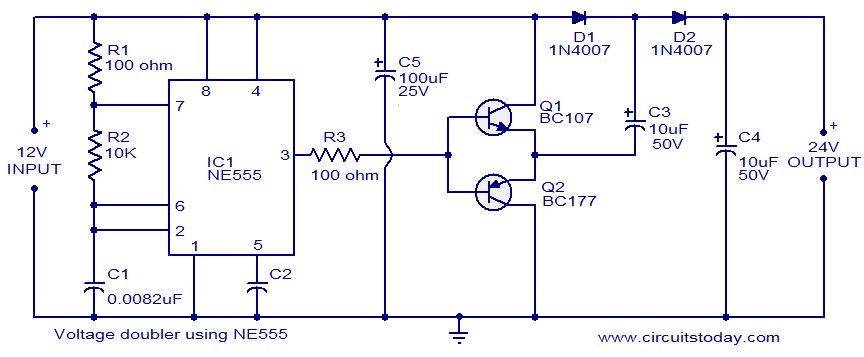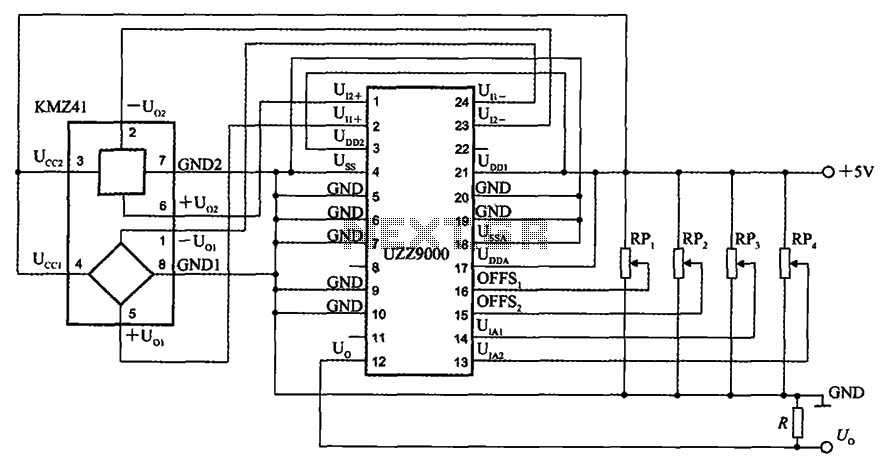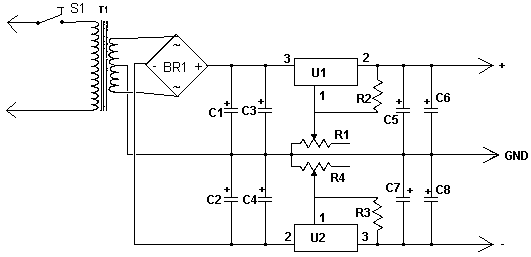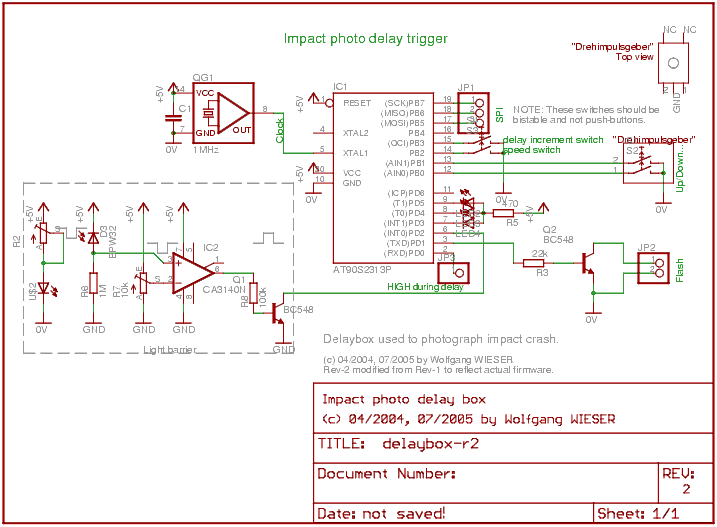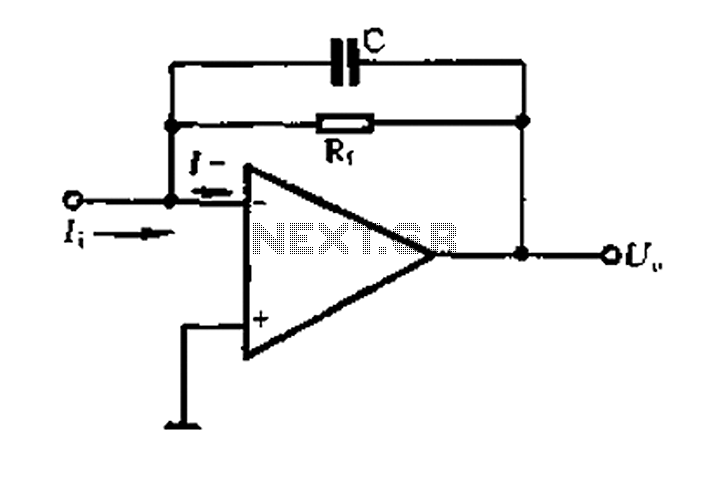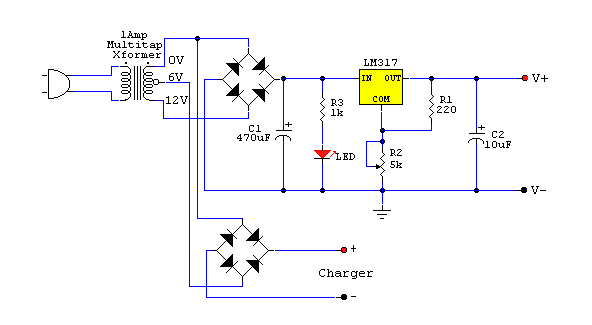
High voltage supply
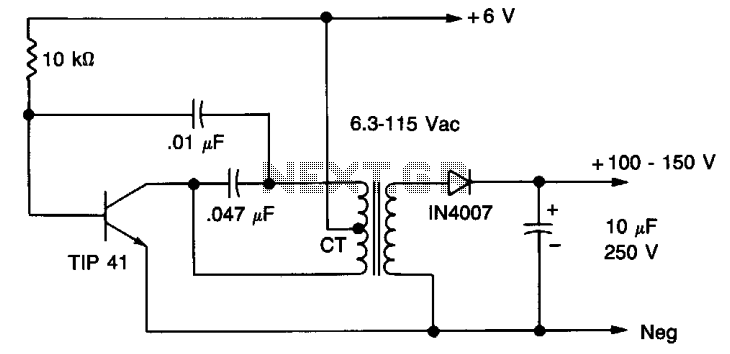
A 6 V battery can provide 100-150 Vdc center-tapped at a high internal impedance (not dangerous though it can inflict an unpleasant jolt). A 6.3 V transformer is connected in reverse with a transistor used in a Hartley oscillator configuration. The frequency of operation may be controlled by varying the value of the 10 ohm resistor. The 10 µF capacitor must have a working voltage of at least 250 Vdc.
The described circuit utilizes a 6 V battery as the power source, which is capable of generating a high DC voltage in the range of 100-150 Vdc through a center-tapped configuration. This setup is achieved using a 6.3 V transformer that is connected in reverse, allowing for the step-up of voltage. The transformer operates under the principle of electromagnetic induction, where the primary winding is energized by the low voltage from the battery, inducing a higher voltage in the secondary winding.
In this configuration, a transistor is employed as a key component in a Hartley oscillator circuit. The Hartley oscillator is known for its ability to generate high-frequency oscillations, which are fundamental in applications such as RF transmission and signal generation. The frequency of oscillation can be finely tuned by adjusting the resistance value of the 10-ohm resistor in the circuit, allowing for greater flexibility in frequency selection.
Additionally, a 10 µF capacitor is included in the circuit design. This capacitor must be rated for a minimum working voltage of 250 Vdc to ensure reliability and safety during operation. The capacitor plays a crucial role in the timing and stability of the oscillator circuit, affecting the charge and discharge cycles that contribute to the oscillation frequency.
Overall, this electronic schematic represents a compact and efficient design for generating high voltage from a low voltage source while providing adjustable frequency output, suitable for various electronic applications.A 6 V battery can provide 100-150 Vdc center-tapped at a high internal impedance (not dangerous though it can inflict an unpleasant jolt). A 6.3 V transformer is connected ' 'in reverse'' with a transistor used in a Hartley oscillator configuration.
The frequency of operation may be controlled by varying the value of the 10 ohm resistor. The 10 µ¥ capacitor must have a working voltage of at least 250 Vdc.
The described circuit utilizes a 6 V battery as the power source, which is capable of generating a high DC voltage in the range of 100-150 Vdc through a center-tapped configuration. This setup is achieved using a 6.3 V transformer that is connected in reverse, allowing for the step-up of voltage. The transformer operates under the principle of electromagnetic induction, where the primary winding is energized by the low voltage from the battery, inducing a higher voltage in the secondary winding.
In this configuration, a transistor is employed as a key component in a Hartley oscillator circuit. The Hartley oscillator is known for its ability to generate high-frequency oscillations, which are fundamental in applications such as RF transmission and signal generation. The frequency of oscillation can be finely tuned by adjusting the resistance value of the 10-ohm resistor in the circuit, allowing for greater flexibility in frequency selection.
Additionally, a 10 µF capacitor is included in the circuit design. This capacitor must be rated for a minimum working voltage of 250 Vdc to ensure reliability and safety during operation. The capacitor plays a crucial role in the timing and stability of the oscillator circuit, affecting the charge and discharge cycles that contribute to the oscillation frequency.
Overall, this electronic schematic represents a compact and efficient design for generating high voltage from a low voltage source while providing adjustable frequency output, suitable for various electronic applications.A 6 V battery can provide 100-150 Vdc center-tapped at a high internal impedance (not dangerous though it can inflict an unpleasant jolt). A 6.3 V transformer is connected ' 'in reverse'' with a transistor used in a Hartley oscillator configuration.
The frequency of operation may be controlled by varying the value of the 10 ohm resistor. The 10 µ¥ capacitor must have a working voltage of at least 250 Vdc.
